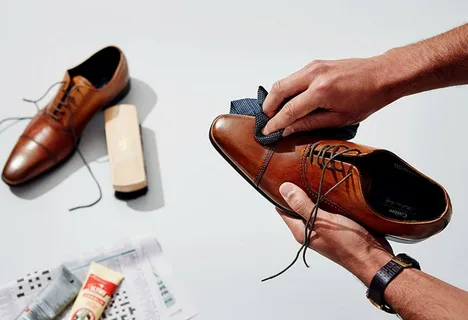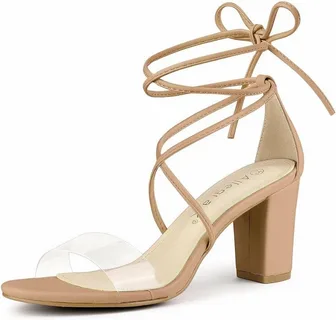
Throughout history, footwear evolved from its basic protective role into a powerful personal style expression. Design choices and material selection are the main reasons shoes exist, but the choice of fabric determines how well they work and appear. Over time certain materials have shown that they make the best lasting leather choices for shoe producers. This article reviews five widely employed fabrics by examining their advantages and disadvantages and showing why manufacturers choose them to make shoes.
Table of Contents
Shoes Depend on the Right Fabric Choice
The fabric used in shoe construction directly influences some crucial aspects:
- Durability and Longevity: How well a material stands up to impact and environmental stress determines how long a shoe will last.
- Comfort and Breathability: An excellent shoe fabric lets both air flow through and manages moisture to make shoes more comfortable and cleaner.
- Flexibility and Support: A fabric’s ability to fit the shape of the foot strongly influences how well shoes feel and support the foot.
- Aesthetics and Style: Fabric texture color and weave create an appealing appearance that designers use to define the perfect shoe style.
- Performance and Functionality: How people use their shoes determines the fabric’s required performance features for example water resistance and traction.
The selection of suitable fabric determines both how well a shoe looks and what it can do for you.
5 Evergreen Shoe Fabrics
These five fabrics have managed to stand through time, displaying their durability and versatility in footwear design:
- Leather:
We know leather as one of the earliest and most traditional shoe fabrics used since early times. The term “leather” comes from animal sources where we use their natural hide material for production. Natural properties make this textile a preferred material for many different types of footwear products.
The special feature of leather is that it molds naturally to the shape of your foot as its surface adjusts over time. The material provides strong protection against major foot tears.
Advantages:
- Longevity: Leather stays durable against everyday use and stands up against constant heel positions.
- Air Circulation: Due to its porosity leather lets air pass freely to help keep your feet fresh and dry.
- Comfort: Leather fits naturally with the foot contours.
Leather displays basic natural beauty and its different finishes deliver multiple ways to restyle things.
Disadvantages:
- Leather products normally cost more than man-made fabrics in the market.
- It is necessary to maintain: To keep leather in good shape you need to perform routine cleaning and treatment steps. WaterUV damage is high.
Application: Most types of shoes employ this material including formal shoes, boots, everyday footwear, and select athletic footwear. Companies make leather through multiple production methods that create finished goods with quality differences in thickness and surface texture.
2. Canvas:
The normal width of well-made canvas tawing shoes helps them live longer.
Characteristics: The textile feels light to wear because it lets air flow through and stands up well against regular wear. Textile makers can easily adjust their appearance by dying or printing on this flexible fabric type.
Advantages:
- Economy-friendly: Canvas has become the most preferred fabric selection because of its many benefits.
- Breathability: Good air movement through canvas helps the shoes keep the feet feeling cool.
- Versatility: You can use canvas in different types of shoes and easily personalize them through color and design options.
- Washability: When placed in a washing machine canvas shoes get cleaned quickly.
Disadvantages:
- Durability: The material holds less durability compared to both leather and synthetic materials.
- Water Sensitivity: The fabric of canvas lets water pass through to keep its absorbing material wet until complete dryness.
- Limited Support: Canvas ranks below other high-quality shoe materials at supporting your feet.
Applications: People use canvas in many kinds of everyday shoes including athletic footwear, casual footwear, and slip-on shoes.
3. Suede:
Suede stands out as a special type of leather because its fluffy surface delivers a superbly gentle yet fashionable experience for fashion-minded shoe buyers.
Characteristics: The suede feels soft to the touch and pliable while creating an exclusive velvet-like sensation.
Advantages:
- Comfort: Since the beginning suede materials have been developed to create a gentle surface for feet.
- Aesthetics: Suede creates a fashionable rich look. Polyester embroidery thread can be used to embroider suede shoes to create a fashion-forward shoe.
- Flexibility: Our feet can easily adapt to the shape of suede because this material remains soft and flexible.
Disadvantages:
- Care: Normal surfaces and specialized treatment help suede remain free of damage.
- Water Sensitivity: Identical to other materials, suede is ruined quickly when wet and gets stained easily.
- Durability: Suede has less resilience than regular leather products.
Applications: Companies use suede to make boots and dress shoes as well as everyday casual shoes and sometimes running shoes.
4. Nylon:
Nylon stands as a synthetic polymer that makes durable athletic and performance shoes possible.
Characteristics: Nylon works well for sports shoes because it can handle strong pulls, resists scrapes and bends, and stretches properly yet keeps water away.
Advantages:
- Durability: This fabric resists routine damage since it remains strong throughout daily use.
- Water Resistance: Nylon keeps water away from fabrics and they become dry fast.
- Lightweight: Nylon fabric stays lightweight which proves useful for athletic shoe designs.
- Easy to Carry: Since nylon stretches easily this fabric lets the shoe follow natural foot movements.
Disadvantages:
- Nylon: The material holds heat inside better than leather or natural cotton.
- You will feel unpleasant warmth from nylon fabric when temperatures climb too high.
Applications: Manufacturers choose nylon often as their material for sports shoes and special performance shoes plus outdoor footwear.
5. Mesh:
Mesh fabric stands out as a preferred choice for athletic footwear production because its woven or knitted design creates great ventilation.
Characteristics: The fabric feels weightless, lets air through, and moves smoothly because it uses synthetic fiber materials including nylon or polyester.
Advantages:
- Breathability: The mesh structure of fabric allows air to move freely giving you a cooler and drier foot experience.
- Lightweight: The mesh fabric works well during athletic competition because it weighs only a little.
- Flexibility: The stretchable mesh material provides a great fit all around the foot.
Disadvantages:
- Durability: Mesh fabrics tend to show wear faster in all parts of the shoe except where it receives increased use.
- Limited Support: The textile mesh supports your feet with weaker reinforcement compared to other strong fabrics.
- Water Sensitivity: Mesh does not perform well when exposed to water.
Applications: Manufacturers most often put mesh material into athletic shoes, running shoes, and high-performance shoes.
Combining Fabrics for Optimal Performance
Frequently, shoemakers put together a couple of different fabrics to find an ideal balance between performance, comfort, and appearance leather upper gives a shoe durability and support while the mesh panels provide breathability. With these various fabrics, designers are able to play with the unique properties of each material to create a pair of shoes that perform extremely well in particular aspects.
The Future of Shoe Fabrics
New shoe fabric advancement drives better footwear manufacturing. People who study footwear and make shoes aim to bring us better products that use eco-friendly materials while feeling great. Some emerging trends include:
- Recycled and Sustainable Materials: Bootmakers now focus more on getting their raw materials from recycled polyester and organic cotton and stitched with bonded nylon thread.
- Smart Fabrics: Smart fabrics that include sensors and advanced tech help us measure athletic performance while creating customized comfort.
- 3D-Printed Materials: Industrial 3D printers allow manufacturers to produce footwear materials that possess both specific properties and intricate component designs.
Conclusion
Fabric selection remains the key design element behind footwear because it determines its quality performance ability and aesthetic qualities. Leather canvas, suede, nylon and mesh remain top choices for footwear production because they offer proven features to market demands. Designers create better shoe options when they know how each fabric affects consumers’ needs and wants. New technology will enable the development of better shoe materials as our future shoes become both more stylish and useful.







